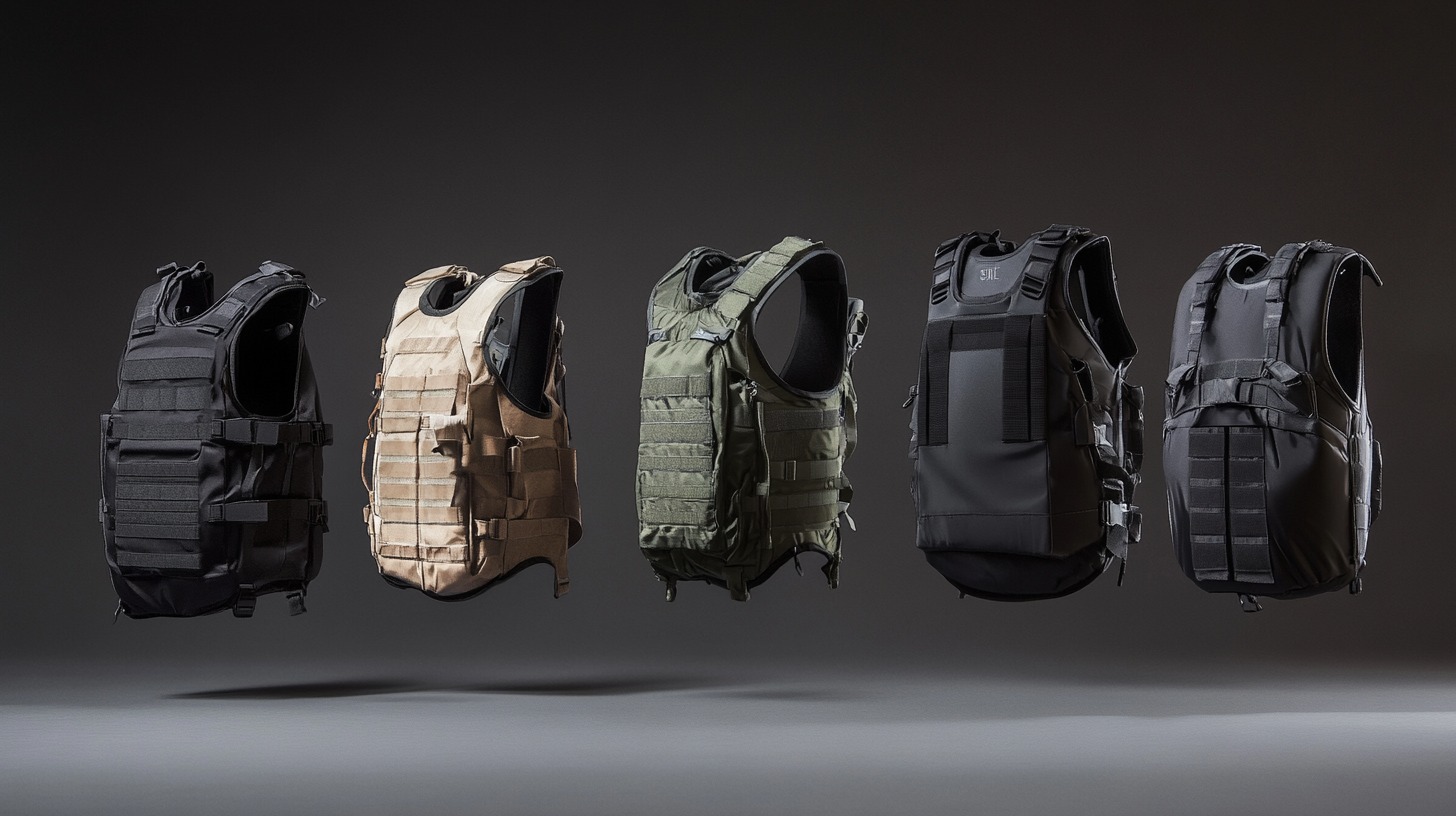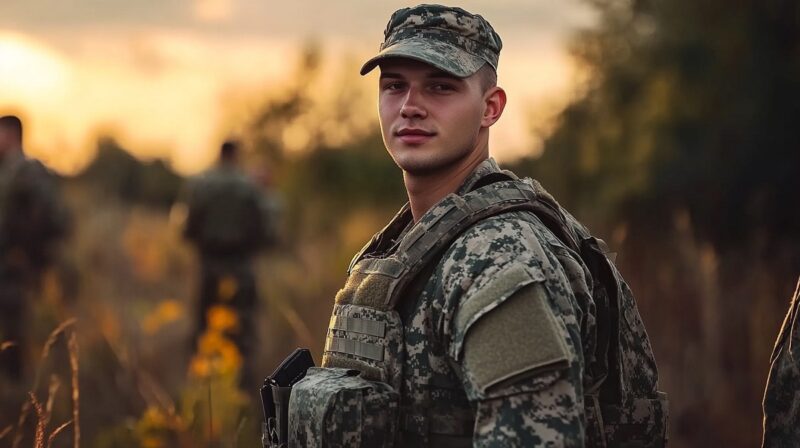The bulletproof vest is a vital protective gear designed to shield individuals from ballistic threats.
Initially intended for military and law enforcement personnel, they have become increasingly essential for personal protection in high-risk environments.
Their primary purpose is to absorb the impact of bullets and shrapnel, reducing injury or death.
Given the dangerous nature of modern warfare and law enforcement duties, bulletproof vests have evolved in material and design, becoming indispensable in saving lives and enhancing personal security.
Let us talk about bulletproof vests as a concept in greater detail.
Table of Contents
ToggleWho Invented the Bulletproof Vest?
In 1893, Casimir Zeglen, a Catholic priest from Poland, achieved a significant breakthrough in bulletproof technology with the invention of the modern bulletproof vest.
He utilized silk to create a vest capable of stopping low-velocity bullets, primarily designed to prevent assassination attempts.
The tragic death of Chicago Mayor Carter Harrison Sr. had a profound impact on Zeglen, motivating him to seek a more effective method of protection.
- Zeglen’s vest added multiple layers of silk, a material known for its surprising resistance to bullets.
- The vest was specifically developed to counter threats faced by political figures, especially in response to the assassination of Mayor Harrison.
- Zeglen’s vest offered better protection while being lighter than traditional armor used during the period.
However, the high cost of silk limited the vest’s accessibility to the general population. Despite this, Zeglen’s innovation laid the foundation for future developments in body armor.
In 1901, Zeglen partnered with Jan Szczepanik, a fellow Polish inventor, to improve upon the silk vest.
Together, they created a more advanced bulletproof fabric by combining silk with layers of linen and wool.
- Silk, linen, and wool were layered to enhance durability and protection.
- Their vest famously saved the life of Spain’s King Alfonso XIII during an assassination attempt, demonstrating the vest’s real-world success and marking a turning point in bulletproof technology.
Interesting Fact: The global bulletproof vest market is estimated at $1.7 billion in 2024, and projected to reach $2.03 billion by 2029.
The Evolution of Materials
As we know, the materials used to make bulletproof vests evolved over the centuries.
The evolution is presented here:
| Material | Era | Advantages | Weight | Cost |
|---|---|---|---|---|
| Silk | Late 19th century | Lightweight, resistant to low-velocity bullets | Light | Very high |
| Ballistic Nylon | World War II | Affordable, protected against shrapnel | Moderate to heavy | Low |
| Flak Jackets | World War II – 1950s | Durable, protected against fragmentation | Moderate to heavy | Low |
| Steel Plates | 1930s – 1950s | Effective against higher-velocity bullets | Very heavy | Moderate |
| Kevlar | 1960s – 1970s | Lightweight, durable, highly bullet-resistant | Light to moderate | High |
| Ceramic Plates | 1980s – present | Strong protection against high-caliber rounds | Heavy | Very high |
| UHMWPE | 2000s – present | Lightweight, floats in water, high protection against bullets | Extremely light | Very high |
| Graphene Microfiber | 2010s – present | Extremely strong, lightweight, flexible | Ultra-light | Very high |
| Spider Silk | 2020s – present | Lightweight, flexible, biodegradable | Ultra-light | Very high |
While silk vests were a notable advancement in early bulletproof technology, they had significant limitations.
Their high cost made them inaccessible to the general public, and their effectiveness against higher-velocity bullets was insufficient for widespread use.
As firearms evolved, so did the need for better protection. This led to the development of flak jackets during World War II, which marked a new phase in body armor.
Flak jackets, made from ballistic nylon, were designed to protect soldiers from shrapnel and flak, rather than direct bullet impacts. They were more affordable and provided broader protection than silk vests.
However, they were not effective against rifle or handgun fire, making them inadequate for close-quarters combat or law enforcement operations.
Soldiers and law enforcement personnel still needed more reliable protection that could withstand modern firearms.
Kevlar and Modern Bulletproofing
The development of Kevlar in the 1960s and 1970s was a game-changer in the field of bulletproofing.
Kevlar, a synthetic fiber developed by DuPont, offered a unique combination of lightweight durability and resistance to ballistic threats.
Unlike its predecessors, Kevlar could withstand bullets from handguns and rifles while being much lighter than traditional flak jackets or silk vests.
In the 1970s, the National Institute of Justice (NIJ) began testing and certifying Kevlar vests, ensuring that they met rigorous safety standards for law enforcement and military use.
These tests confirmed the material’s effectiveness in stopping bullets, and it quickly gained widespread adoption.
By the late 1970s, police officers and military personnel around the world began wearing Kevlar vests, which significantly improved their safety on the job.
- Helmets
- Gloves
- Other protective gear
Over the years, it became the standard for personal protection, leading to a dramatic reduction in fatalities among law enforcement officers.
Kevlar’s success set the stage for future developments in body armor, including newer, lighter, and stronger materials that continue to evolve today.
The Future of Body Armor
Kevlar has been the cornerstone of bulletproof vests for decades, but recent technological developments are pushing the boundaries of personal protection even further.
New materials and innovations in fiber technology promise to make the bulletproof vest stronger, lighter, and more versatile than ever before.
When you take all of this into calculation, the future of bulletproof vests looks promising.
- Lighter and more comfortable vests, improving mobility and endurance for users.
- Greater protection against a wider range of ballistic threats, including higher-caliber bullets and explosions.
- Increased accessibility due to advancements in production processes and material efficiency.
These innovations are set to transform personal protection, potentially saving even more lives in the years to come.
Interesting Fact: In 2022, NYPD received more than 1000 lightweight balistic vests after the tragic death of Queens detective.
Impact and Legacy

Since their introduction, bulletproof vests have played an essential role in saving countless lives, particularly among law enforcement officers.
According to the National Sheriff Association, it is estimated that more than 3,000 police officers’ lives have been saved by wearing bulletproof vests since 1987.
The protective gear has become indispensable in law enforcement and military operations, where it provides life-saving defense against firearms.
Cultural and Historical Significance
Bulletproof vests hold immense cultural and historical significance. They have actively shaped modern warfare and influenced how law enforcement agencies perform their duties.
The invention and continuous improvement of bulletproof vests have altered personal protection practices across the globe.
Their widespread use has elevated the standards for safety, making protective equipment a crucial part of high-risk professions.
These days, we can see that wearing one of these is perfectly legal, in many US states, like Texas, Illinois, or California, and some other parts of the world.
Influence on Tactics and Strategies

Beyond personal safety, bulletproof vests have had a profound influence on the tactics and strategies used in both military combat and law enforcement.
With the added layer of protection, soldiers and officers can operate in more dangerous environments with greater confidence.
It has led to changes in how they approach missions, enabling them to take calculated risks while minimizing the potential for injury.
The vest’s reliability has, in turn, inspired advancements in other personal protective gear, such as helmets and ballistic shields, which further enhance safety in high-risk situations.
The Bottom Line
The history of the bulletproof vest reflects humanity’s continuous efforts to innovate and adapt to changing threats.
Early experiments with materials like steel and silk, though limited by their practicality, laid the foundation for modern advancements.
Today’s lightweight, high-performance vests are a result of centuries of trial, error, and determination.
Sources
- Culture – The Monk Who Stopped Bullets with Silk
- Chicago History – Assassination of Carter Harrison
- Research Gate – Tailored to the Times: The Story of Casimir Zeglen’s Silk Bullet-Proof Vest
- Mordor Intelligence – Bulletproof Vest Market Size & Share Analysis
- Slate – Flak Jackets vs. Bulletproof Vests
- Science Direct – Fibers used for high-performance apparel
- National Insitute of Justice
- Police1 – NYPD detectives receive 1,000+ lightweight ballistic vests
- National Sheriffs’ Association Supports – National Sheriffs’ Association Supports Mandatory Body Armor and Seatbelt Wear Policies
Related Posts:
- Is It Illegal to Wear a Bulletproof Vest in Texas in 2025?
- What are Bulletproof Vests Made of? - Important…
- Bayraktar TB2 - The Drone That Made History
- How Long Do You Have To Be In The National Guard To…
- How Long Is Coast Guard Boot Camp - The Truth Behind…
- PCS Moves and Entitlements: What’s Covered and How…







